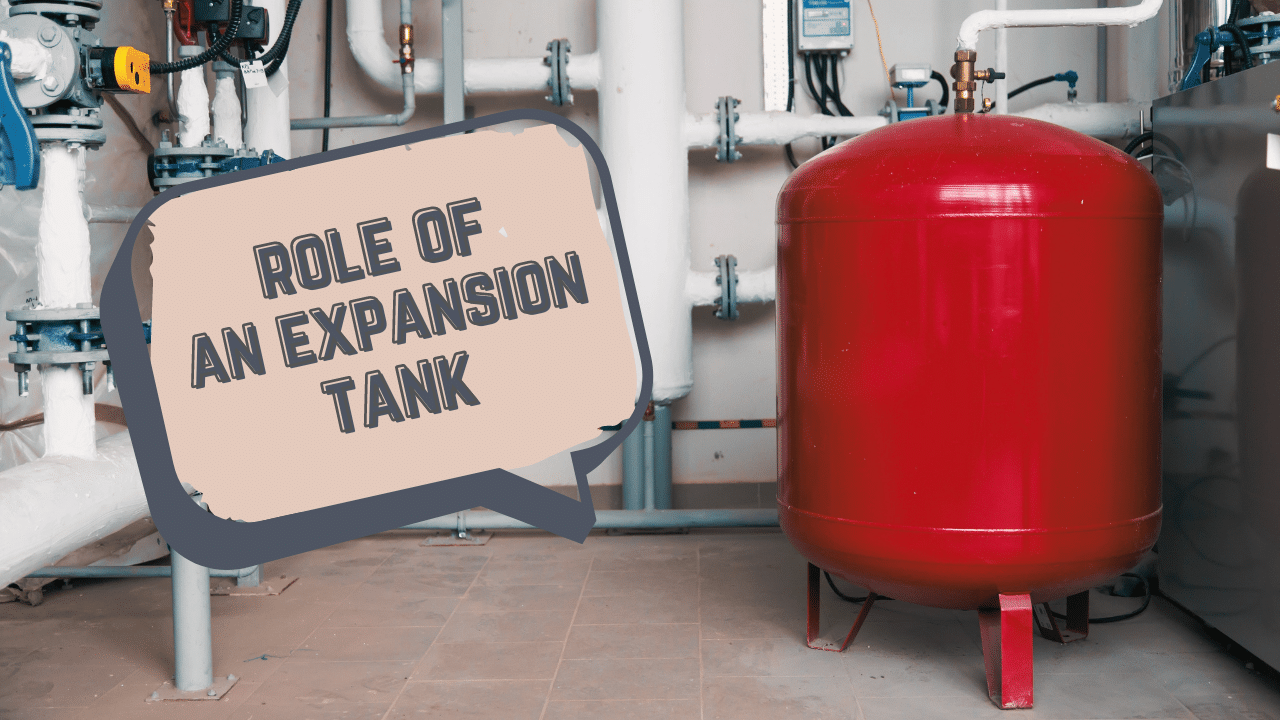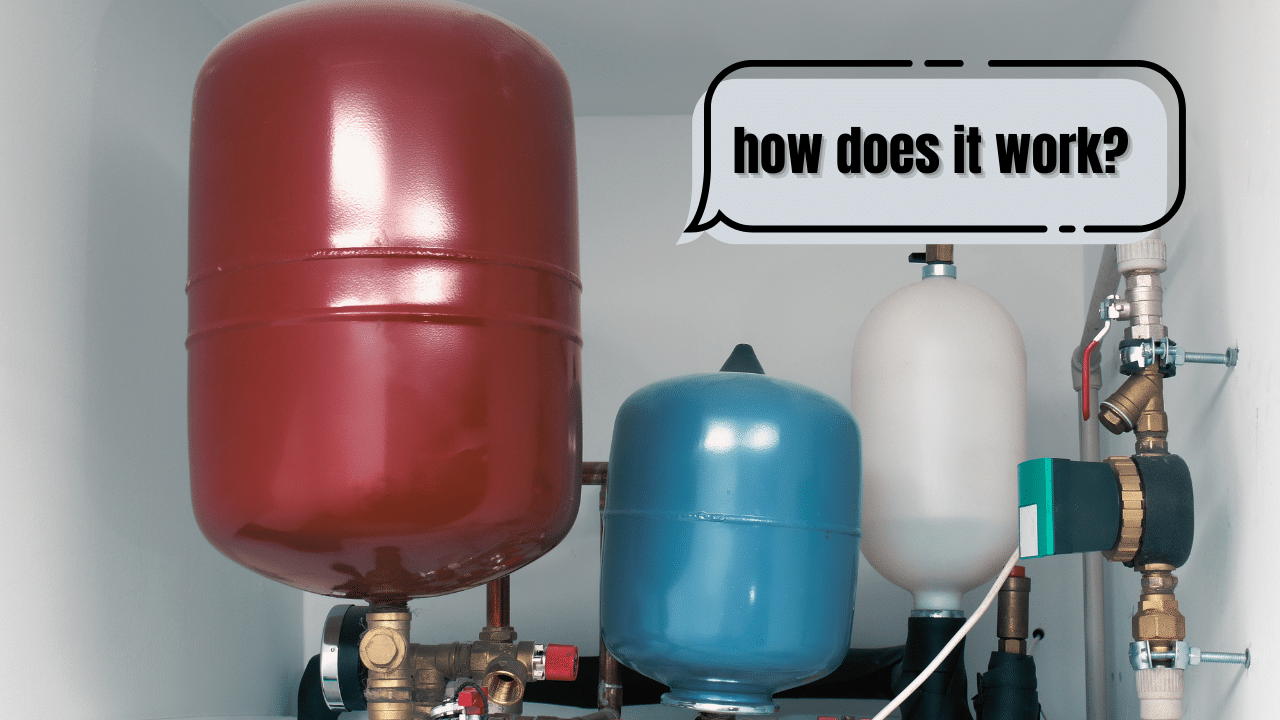Have you ever noticed an odd-looking tank just above your water heater? Chances are, that’s the expansion tank. Although it does have a bizarre placement, it is an essential part of your home’s water heater system.
So, what does an expansion tank do precisely?
Simply put, it is one cost-effective and convenient addition to regulate water pressure and avoid costly repairs to your heating system’s components and pipes.
In heating water, it naturally expands and increases the pressure in residential closed heating systems. With these frequent pressure fluctuations, the system’s components may be prone to damage over time.
What is the Function of an Expansion Tank?
To put it shortly, an expansion tank plays a crucial role in any home heating system, especially against increased pressure and volume.

It is designed to maintain a constant pressure– protecting the pipes from damage brought by excessive stress. Pressure damage is a common concern for tankless water heaters. However, your plumbing system is at risk of damage if you have a tank-style unit at home.
Standard expansion tanks will cost you anywhere between $35 for small units and up to $1,150 for more extensive, commercial tanks.
Keep in mind that there’s only so much space in both the boiler and the pipes in closed residential heating systems. Once water takes up all the available space with nowhere else to go, the resulting pressure can be damaging. It may remain in its weakest state until it results in a leak or a burst pipe.
For your reference, this safety device is also commonly referred to as a thermal expansion tank.
Thermal Expansion Tank Appearance
If you’re wondering about what a thermal expansion tank looks like in real life– visualize a small propane tank in off-white or blue colors.
The top part has the air valve, which is something you’ll quickly notice on standard tires. It is commonly known as the Schrader valve. Its bottom part has a threaded pipe connection, generally about the size of a standard basketball. The size will heavily depend on the water heater capacity it relates to.
Expansion Tank Maintenance & Tips
Suppose you already have an existing expansion tank at home. If that’s the case, you will need to conduct a regular assessment to ensure it is functioning in its prime.
How do you check if the expansion tank usually works? There’s a simple method to do this. Place your hand on the tank to feel its current temperature. Ideally, the tank’s top portion should be warm to the touch, with the bottom generally at room temperature.
If you think the entire tank is warm, it may be filled with hot water (which only happens if its diaphragm fails). It’s best to consult a local tank professional to determine if you need an urgent replacement.
Expansion tanks require regular maintenance if you want to benefit from their optimal operation. Aim for professional routine maintenance done at least once a year.
Checking the Bladder
Aside from the easy expansion tank assessment (which you can do at home), a professional may need to conduct an on-site visit to check the bladder.
Here’s how it usually goes:
Homeowners looking for a speedy and easy way to check if the tank’s in good condition is to press the Schrader valve located outside the tank.
Once you notice air hissing after doing so, this means the bladder is in its prime condition. If water drips out after pressing it, the bladder may rupture, requiring you to replace it with a new one.
Checking the PSI
After ensuring the bladder’s in a good state, it’s also recommended to have the tank’s PSI pressure checked. Refer to your owner manual to determine the right PSI for your tank. Have a copy saved somewhere (on your notes or your phone) if you need to look it up again sometime in the future.
Using a tire pressure gauge, take the initial reading. If the PSI is way above the ideal number, you may let some air out by pressing the valve. If the PSI reading is too low, use a hand/tire pump to add in some air.
Avoid using an air compressor if you need to add air. Doing so may only put the bladder at risk of a possible rupture.
To help you visualize an expansion tank system better, note that it is designed with an internal bladder to separate the air from the water. The diffusion process enables the bladder to leak air, often at a standard rate of 1 PSI in a year.
Let’s say the bladder happens to rupture the expansion tank; chances are it may be filled with water and be unable to drain correctly. In this situation, you may be advised to buy another expansion tank. Bladder repair may be impossible at this point.
When installed correctly, a thermal expansion tank has an average lifespan of up to 6 years.
How does an Expansion Tank work?

Unlike heating a water kettle, the water heater doesn't turn into steam once it reaches boiling point. Instead, it resorts to thermal expansion once sufficiently heated up.
The additional pressure is usually handled by the local water supply system, posing no problem on your end. But if you have a check valve or a pressure-regulating valve (PRV) at home– this device manages all the excess pressure in the plumbing system.
Note that any excessive pressure may damage your fixtures, appliances, and supply lines.
That's why an expansion tank is a big necessity in many households in the country. Given correct installation, all the excess pressure will be absorbed by this safety device.
What is an Expansion Tank made of?
Half of the expansion tank holds water and is connected to the home heating system's pipes. Meanwhile, the other half is typically dry and filled with compressed/pressurized air at approximately 12 psi.
A butyl rubber bladder/rubber diaphragm lies in the middle. It divides the tank into two distinct sections. Once the heater warms up the water, the hot water expands and pushes the bladder down. This increased pressure causes the air (on the other side) to be compressed.
As a result, there's more space for excess water to enter the system. Since an expansion tank effectively relieves the system of any excessive pressure– it protects the pipes from damage and extends the life of the different heating system components. (Related: How Long Does A Water Heater Last? A Guide For Consumers)
Frequently Asked Questions (FAQs)
Because an expansion tank was not necessary until recently, most residences with a check valve on the water main do not have one. Depending on the plumbing design of the house, it may or may not cause additional pressure buildup.
It may be best to add an expansion tank if you observe that the relief valve on the water heater has water drippings or the washers in plumbing fixtures are quickly deteriorating. It will ensure that you spend a lot less compared to more costly damage in your home's plumbing system.
Make sure to have a thermal expansion solution that is just the right size for your plumbing system.
One 50-gallon water heater, for instance, can be served by a 2-gallon expansion tank. If you have more than one heater on the same or connected system, you can either have an expansion tank for each heater or a single, larger expansion tank. Again, check with local plumbing code amendments and the expansion tank manufacturer's specifications to ensure you have accurate information for your situation.
For instance, a single 50-gallon water heater is served the size of a 2-gallons expansion tank. Having more than one heater on the same system means you can have either a single, large expansion tank or an expansion tank for each of your heaters.
Remember to check the amendments with your local plumbing code and the manufacturer's specification to ensure that you have the correct information to address your situation.
Unfortunately, the life expectancy of an expansion tank can be very hard to predict because of many different factors: water quality, tank quality, and proper tank inflation. Some tanks may last only two years, while some units can last for more than eight years. We highly recommend replacing them not exceeding a year after the expiry of the manufacturer warranty.
